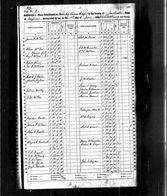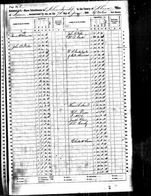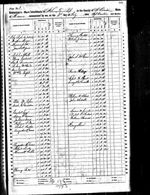
Slavery in Nodaway County

Slavery in Nodaway County
Federal Writers' Project. Underground Railroad Map of the United States, Ca. 1838 to 1860. Map.
Familiar Faces
Slave schedules were used throughout the 19th century as a separate part of the US census to keep track of slaves. This is the slave schedule from Nodaway County, taken in 1860. Do you see any familiar names? Isaac Prather, a prominent Maryvillian, owned the largest number of slaves in the Platte area. His list takes up almost one and a half pages of this census.
Click to enlarge the image to the right and examine the local census.



The National Archives in Washington DC; Washington DC, USA; Eighth Census of the United States 1860; Series Number: M653; Record Group: Records of the Bureau of the Census; Record Group Number: 29

Small Town vs. Big City
Family farms were the most profitable in Missouri as opposed to the large plantations in the South. St. Louis was filled with enslaved and free African-Americans. Most slaves in St. Louis worked as stevedores and draymen on the riverfront, on riverboats, in the lead and salt mines, and as handymen, janitors, and porters. Many women were maids, nannies, and laundresses. In 1850, the enslaved population in Nodaway County was at 70 people, making up less than two percent of all the slaves in the region. Agriculture dominated this region, and it is likely that most of these enslaved people worked the grain and tobacco fields and with livestock.
Richard and Drucilla Martin, Ages 92 and 102, in Missouri United States, 1936. From the Records of St. Louis’ Courts - Gateway Arch National Park (U.S. National Park Service).
Kansas City
St. Louis
The National Archives in Washington DC; Washington DC, USA; Eighth Census of the United States 1860; Series Number: M653; Record Group: Records of the Bureau of the Census; Record Group Number: 29

In 1862 a woman named Winnie was freed by Jesse Stephenson, see record here.

In 1861, there was a series of court cases when an enslaved woman named Clara became pregnant. Her owner and other local white residents believed she had been raped by John Ware, another local white man. Ware then sued these men for slander. Sadly, what truly happened to Clara is hard to ever know because her voice never appears in the court cases. See the records here, here, and here.





